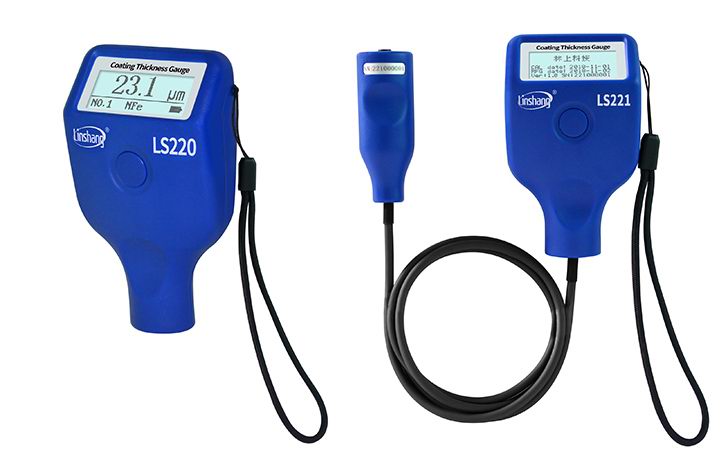Measuring Principle of Linshang Mil Gauge
The Linshang Mil Gauge has two measurement principles, namely the magnetic measurement principle and the eddy current measurement principle. Suitable for coating thickness measurement on iron-based and non-ferrous substrates.
Common coating thickness gauges generally include two measurement principles of magnetism and eddy current, which are divided into integral probe and external cable prob. The LS220 mil gauge is an integral coating thickness gauge, and the LS221 is a split coating thickness gauge.
The Linshang mil gauge uses Hall Effect and eddy current effect. It can be used for the measurement of non-magnetic coatings such as paint, varnish, enamel, and chrome and galvanized on ferromagnetic metal substrates such as steel. It can also be used for the measurement of non-conductive coatings such as coatings, anodized layers and ceramics on non-magnetic metal substrates such as copper, aluminum, die-cast zinc and brass.
The mil gauge has both magnetic measurement principles and eddy current measurement principles. The principle of magnetic measurement is used to detect the thickness of the coating on the iron base. The principle of eddy current measurement is used to detect the thickness of the coating on non-ferrous substrates. Therefore, the Linshang mil gauge has three measurement modes, namely iron-based (Fe) measurement mode, non-ferrous based (NFe) measurement mode, and automatic identification (Fe/NFe) mode.
- High precision coating thickness gauge for used car
- Automotive paint protection films coating thickness gauge
- Plating Thickness Measuring Instrument for Detecting Anti-corrosion Coating
- Linshang LS220, LS191, LS160A– Necessary for Car Cover Inspection
- Coating Thickness Gauge for Second Hand Vehicle
- Zero Adjustment Step of Coating Thickness Gauge
